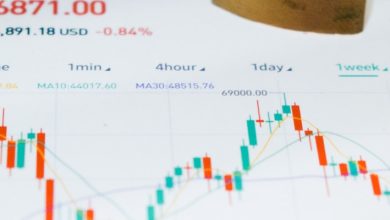The Role of Whales in Driving Market Trends and Liquidity

- Understanding the influence of whales on market trends
- How large investors impact liquidity in the market
- The role of institutional investors in shaping market behavior
- Analyzing the strategies employed by whales in driving price movements
- Exploring the connection between whale activity and market volatility
- The implications of whale trading on smaller investors and market dynamics
Understanding the influence of whales on market trends
Whales, in the context of financial markets, refer to individuals or entities that possess a significant amount of capital and have the power to influence market trends. These whales are often institutional investors, hedge funds, or wealthy individuals who can make large trades that impact the price of assets. Understanding the influence of whales on market trends is crucial for investors and traders alike.
Whales have the ability to create liquidity in the market by buying or selling large quantities of assets. This can lead to significant price movements and volatility, as their actions can trigger a domino effect among other market participants. By closely monitoring the behavior of whales, investors can gain insights into potential market trends and adjust their strategies accordingly.
It is important to note that not all whales have the same impact on the market. Some whales may have a long-term investment horizon and make strategic decisions based on fundamental analysis, while others may engage in short-term trading strategies to capitalize on market inefficiencies. By analyzing the trading patterns and positions of whales, investors can gauge market sentiment and make informed decisions.
How large investors impact liquidity in the market
Large investors, often referred to as “whales” in the financial markets, play a significant role in influencing liquidity. These deep-pocketed individuals or institutions have the power to move markets with their substantial capital. When whales enter or exit a position, they can cause significant price fluctuations due to their sheer volume of trading activity.
One way in which large investors impact liquidity is by creating sudden surges in trading volume. This influx of buying or selling activity can lead to increased market volatility, as other market participants react to the whale’s actions. As a result, liquidity can be temporarily boosted or diminished, depending on the direction of the whale’s trades.
Moreover, whales can also act as market makers, providing liquidity by continuously buying and selling assets. By offering to buy or sell large quantities of an asset at a specified price, whales help ensure that there is a ready market for those looking to trade. This constant presence of liquidity can help stabilize prices and prevent sharp fluctuations.
However, it is essential to note that while large investors can enhance liquidity, they can also exacerbate market imbalances. If a whale decides to exit a position rapidly, it can trigger a domino effect as other traders rush to adjust their positions accordingly. This sudden shift in market sentiment can lead to a liquidity crunch, making it challenging for traders to execute trades at desired prices.
In conclusion, large investors, or whales, wield significant influence over market liquidity. Their actions can impact trading volumes, market volatility, and price stability. While whales can contribute to market efficiency by providing liquidity, their presence also poses risks that traders should be mindful of when navigating the financial markets.
The role of institutional investors in shaping market behavior
Institutional investors play a crucial role in shaping market behavior due to their significant influence on market trends and liquidity. These investors, such as pension funds, insurance companies, and mutual funds, manage large sums of money on behalf of their clients or members. As a result, their buying and selling activities can have a substantial impact on the prices of stocks and other assets.
One way in which institutional investors shape market behavior is through their ability to move large volumes of assets quickly. When these investors decide to buy or sell a particular stock, their transactions can significantly affect its price. This can create opportunities for other investors to follow suit, leading to a domino effect that can drive market trends in a particular direction.
Furthermore, institutional investors often have access to research and analysis that individual investors may not have. This information advantage allows them to make more informed investment decisions, which can influence the overall direction of the market. Additionally, the sheer size of their investments means that their actions can have a magnified impact on market liquidity.
Analyzing the strategies employed by whales in driving price movements
Whales in the financial markets are known for their significant impact on driving price movements. These large investors possess substantial capital and can strategically influence market trends and liquidity. Analyzing the strategies employed by whales provides valuable insights into understanding how they operate within the market.
One common strategy used by whales is known as “accumulation.” This involves buying large quantities of a particular asset over an extended period. By slowly accumulating a position, whales can avoid causing drastic price fluctuations that may attract unwanted attention. This strategy allows them to establish a significant stake in an asset without driving prices too high too quickly.
Another tactic employed by whales is “pump and dump.” In this scheme, whales artificially inflate the price of an asset by spreading positive news or rumors to lure in retail investors. Once the price has reached a desirable level, the whales sell off their holdings at a profit, causing the price to plummet. This strategy can lead to significant losses for unsuspecting investors who bought in at the peak.
Whales also utilize “wash trading” to manipulate prices. This involves trading with oneself to create the illusion of increased trading activity and volume. By artificially inflating trading volume, whales can deceive other market participants into thinking there is genuine interest in the asset, leading to price movements in their favor.
Overall, understanding the strategies employed by whales in driving price movements is crucial for investors looking to navigate the volatile waters of the financial markets. By staying informed and vigilant, market participants can better protect themselves from falling victim to manipulative practices.
Exploring the connection between whale activity and market volatility
Whales, or large institutional investors, have long been known to have a significant impact on financial markets. Their massive size allows them to make trades that can move markets, leading to increased volatility and liquidity. This connection between whale activity and market trends has been a topic of interest for researchers and traders alike.
Studies have shown that whale activity can lead to sudden price swings in the market, as these investors have the power to buy or sell large amounts of assets at once. This can create momentum in the market, driving prices up or down depending on the direction of their trades. As a result, market volatility tends to increase when whales are active.
In addition to impacting market volatility, whales also play a crucial role in providing liquidity to the market. Their large trades help facilitate the buying and selling of assets, allowing other market participants to enter and exit positions with ease. This liquidity is essential for a well-functioning market, as it ensures that there are enough buyers and sellers to keep transactions flowing smoothly.
By exploring the connection between whale activity and market volatility, researchers can gain valuable insights into how these large investors influence market trends. Understanding the behavior of whales can help traders anticipate potential price movements and adjust their strategies accordingly. Overall, the role of whales in driving market trends and liquidity is a fascinating area of study that continues to captivate the financial industry.
The implications of whale trading on smaller investors and market dynamics
Whale trading in financial markets can have significant implications for smaller investors and market dynamics. When whales, or large institutional investors, make big trades, it can create ripples in the market that affect prices and liquidity for smaller investors.
One implication of whale trading is increased volatility in the market. Whales have the power to move large amounts of money in and out of assets quickly, which can lead to sharp price fluctuations that smaller investors may not be able to keep up with. This volatility can make it difficult for smaller investors to make informed decisions and can increase the risk of losses.
Another implication of whale trading is the potential for market manipulation. Whales with significant resources can influence prices by buying or selling large quantities of assets, which can distort market trends and create artificial demand or supply. This can disadvantage smaller investors who may not have the same level of resources to compete.
Additionally, whale trading can impact market liquidity. When whales make large trades, it can absorb available liquidity in the market, making it harder for smaller investors to buy or sell assets at fair prices. This can lead to wider spreads between bid and ask prices, which can further exacerbate the challenges faced by smaller investors.
In conclusion, whale trading plays a significant role in driving market trends and liquidity, but it also poses risks and challenges for smaller investors. It is important for all investors to be aware of the implications of whale trading and to take steps to protect their investments in an increasingly complex and interconnected financial market.



